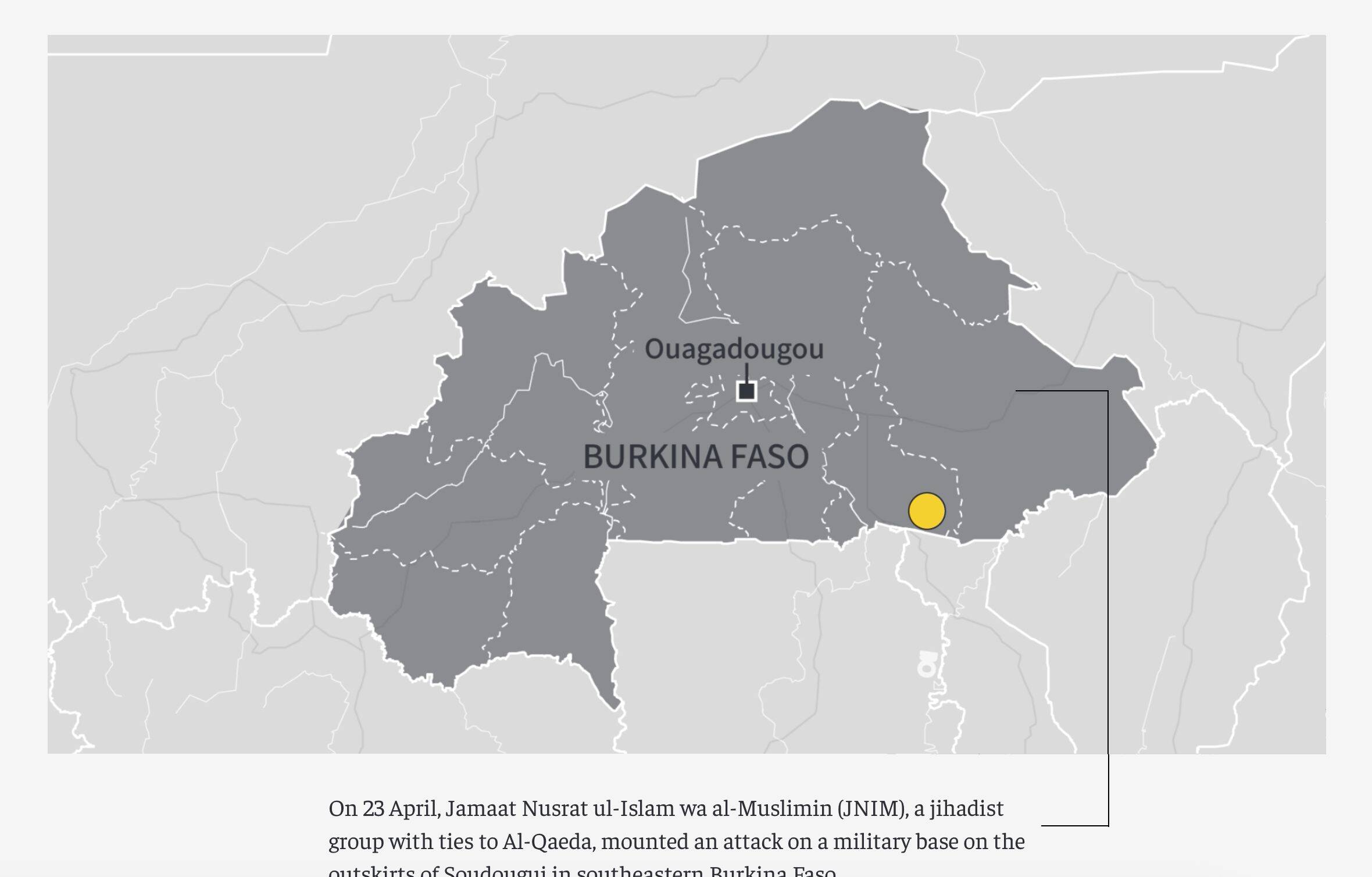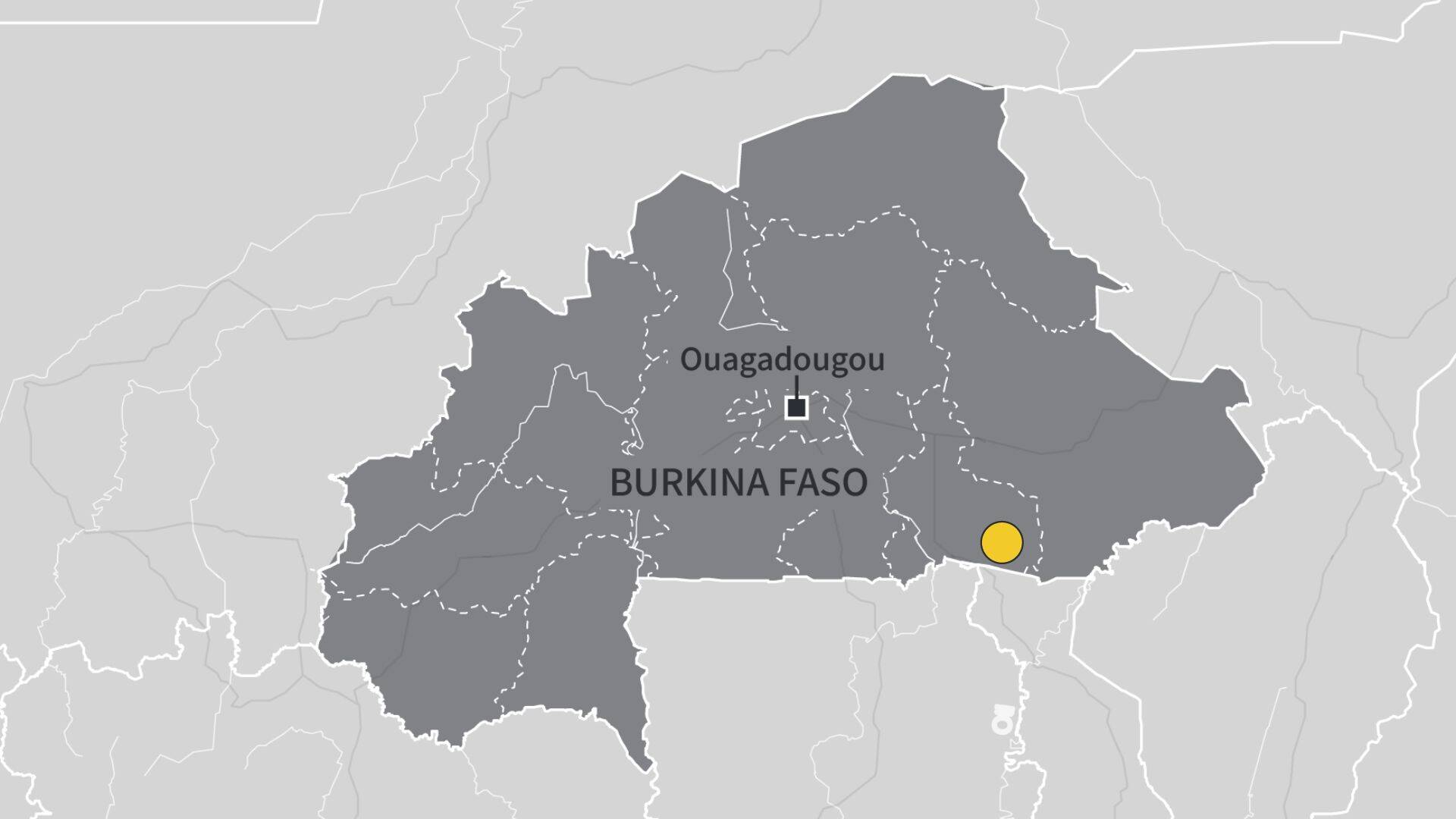Image: Getty Images (FANNY NOARO-KABRE/AFP)
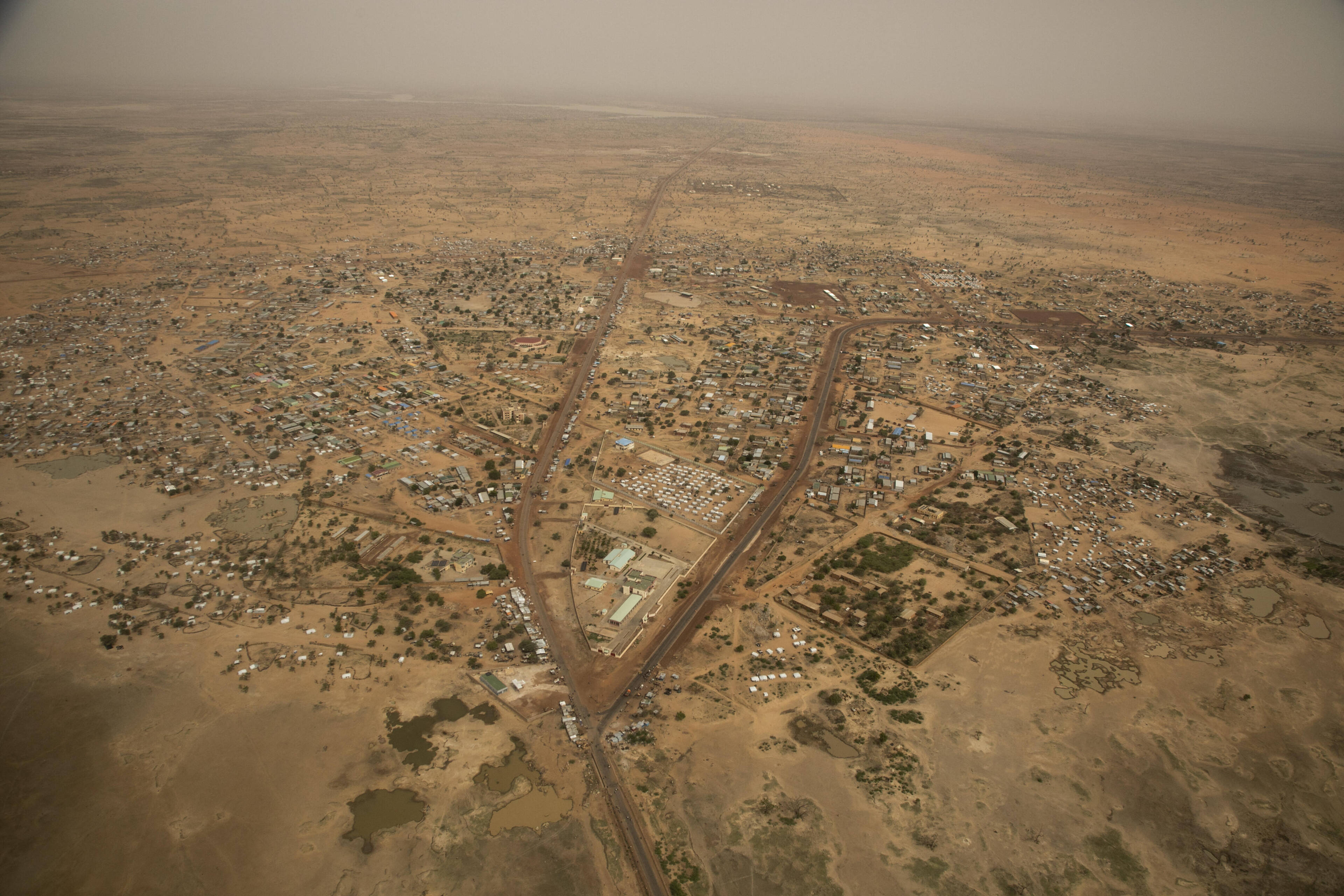
Image: Getty Images (Anna Barclay)
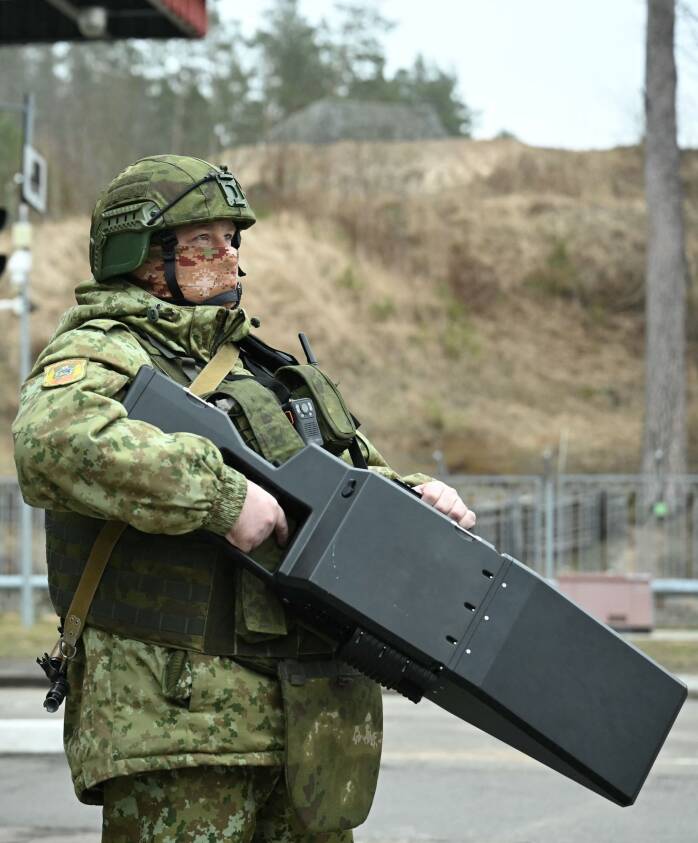
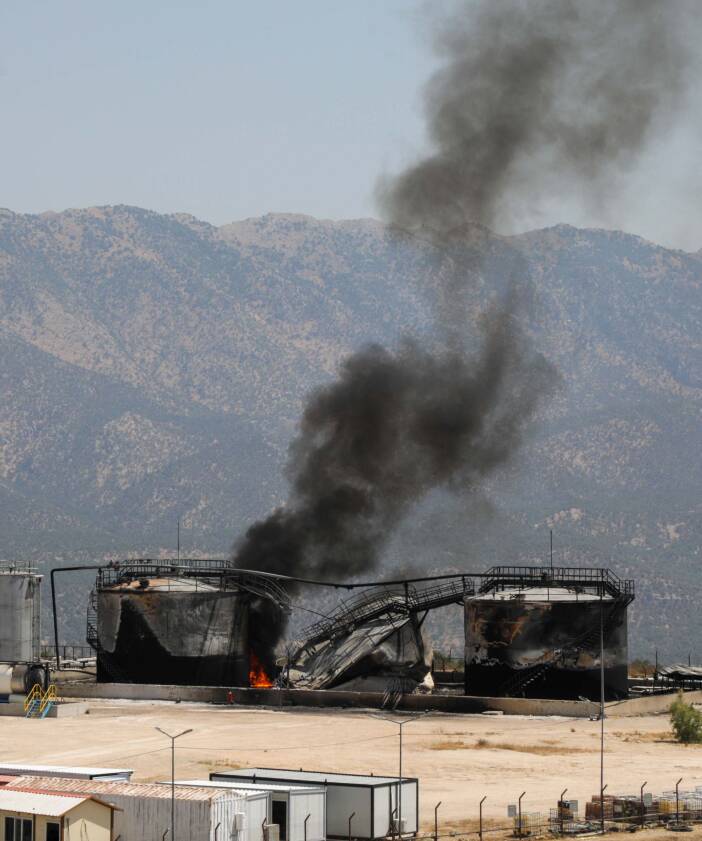
Drone attacks since 2023
Image: Getty Images ( Giles Clarke/UNOCHA)

Terrorist attacks since 2023
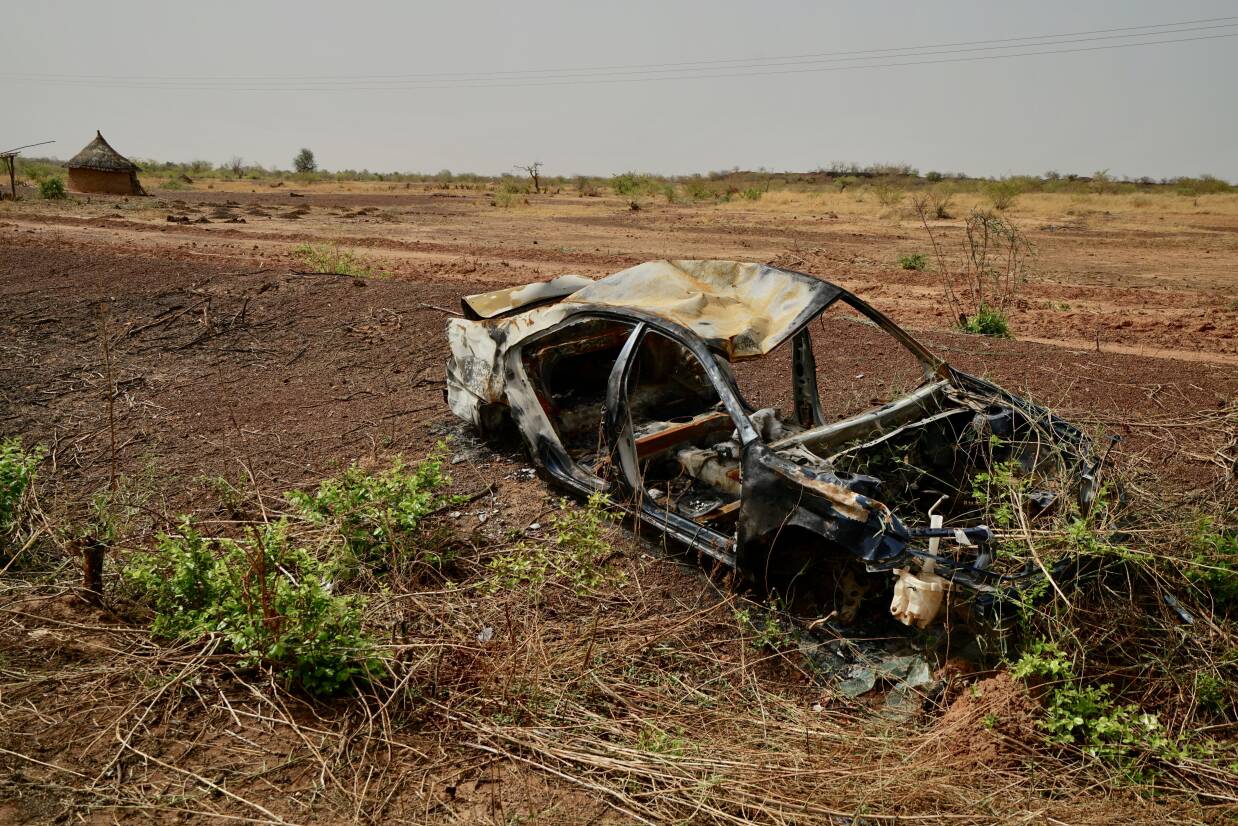
Many terrorist groups have now made concerted efforts to assist and train their members in operating drones for attacks. Driven by their increased accessibility, an Islamic State supporter on a Telegram channel shared a new magazine aimed at assisting jihadists on how to use new modern warfare technology. It notably analyses seven commercially available drones, rating them for their abilities in media production, surveillance operations, and attacks.
Drones have also become a central feature of terrorist propaganda, a trend we assess is highly likely to increase. An Islamic State post in May 2024 depicted a weaponised drone flying towards the Santiago Bernabeu stadium in Madrid ahead of a Champions League fixture. This imagery, coupled with the caption ‘if they constrict and oppress you on the ground, then strike them from the sky’, indicates the group's intent to encourage drone attacks as an offensive weapon against high-profile targets.
The use of drone footage has also become commonplace in propaganda production. Edited footage of terrorist attacks taken by drones from Islamic State West Africa and JNIM is swiftly shared across social media, viewed thousands of times. These videos are a clear demonstration of the jihadist organisations' technological prowess, a valuable tool in highlighting a group’s strength to potential recruits.
Easy access to and sophisticated adaptation of these devices have
resulted in attack drones no longer being exclusively a tool of national militaries. Terrorist groups have continuously innovated and adapted commercially available drones, transforming them from surveillance tools into versatile weapons.
The war in Ukraine has contributed to the rapid evolution of drone tactics. In just a few years, such devices and their use in combat have developed dramatically. In Ukraine, drones have transitioned from often expensive tools of limited use into cheap, autonomous and effective weapons systems. The war has fundamentally altered battlefield tactics, proving that affordable and sophisticated drone capabilities are becoming an increasingly important part of military and, indeed, terrorist strategy.
This global technological innovation has spread globally to other conflict zones, with drone attacks by terrorist groups becoming increasingly prevalent. Islamic State paved the way with attack drones in Iraq and Syria in the 2010s. Now groups operating in areas of Colombia, Pakistan and the Middle East frequently use commercial drones modified with crude triggers to drop explosives on targets.
Similarly, in West Africa, organisations like the Al-Qaeda-affiliated Jamaat Nusrat ul-Islam wa al-Muslimin (JNIM) are using ‘off the shelf’ devices to monitor planted explosive devices or military bases, therefore allowing them to mount attacks of greater complexity.
Drone attacks by terrorists
Drones reshaping the global terrorism landscape
This tactical innovation potentially gives terrorists an edge in ongoing conflicts.
While jamming equipment to bring drones down is available for counter-terrorism forces, it is often expensive and in short supply.
Drones have allowed them to surveil military forces. And terrorists have also used devices laden with explosives to directly bomb the military and civilians in areas where they operate.
Hobby drones provide terrorist groups with a tactical advantage in armed conflict, extending their operational reach.
In the last few years, we have recorded a significant expansion in the use of unmanned aerial vehicles by terrorist groups in conflict zones in Afghanistan, Colombia, India, Iraq, Myanmar, Pakistan, the Sahel and Syria.
Terrorist groups in conflict zones are increasingly deploying hobby drones to mount attacks.


Rebel group attacks
Drone attacks Jan-Jun 2025
Jihadist attacks
Using live images from hovering drones, militants seem to be improving the lethality of attacks by enabling better reconnaissance of enemy positions and coordination during complex assaults. They also seem to be enabling them to limit their
own casualties.
Hobby drones provide several tactical and operational advantages to insurgent groups. The use of drones notably appears to have coincided with militants mounting more daring and complex assaults against the military.
MALI
BURKINA FASO
NIGERIA
CHAD
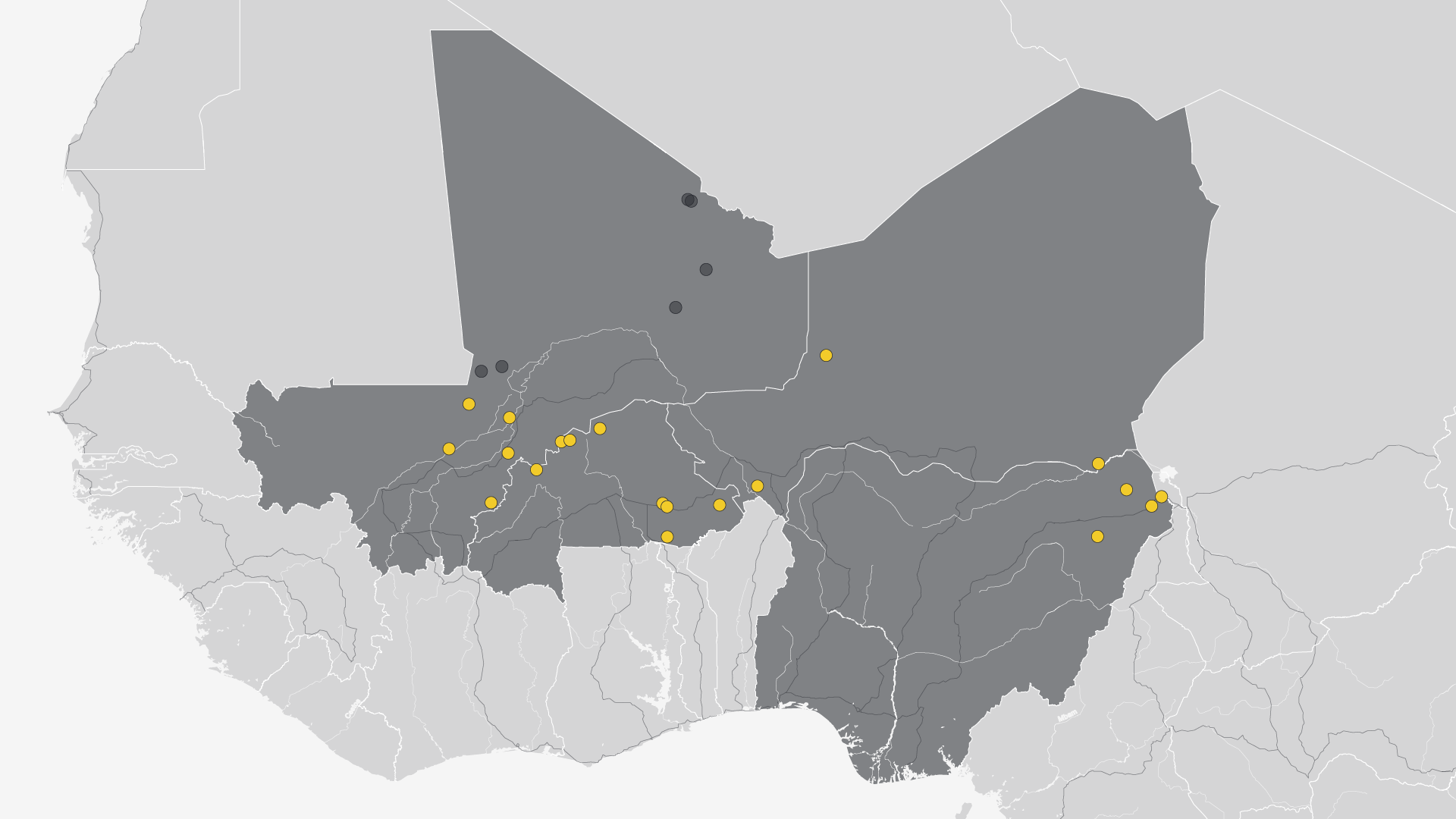
The use of commercial drones in terrorist attacks across the Sahel and West Africa appears to have rapidly increased in 2025. Groups elsewhere in the continent, such as Al-Shabaab in Somalia and IS-Mozambique, have used such devices sporadically to surveil targets in the past five years.
Still, our monitoring of online footage of attacks and extremist channels suggests that groups across West Africa and the Sahel now frequently use drones for surveillance during attacks and to drop explosives. The Azawad Liberation Front, a Tuareg rebel group in northern Mali, has also
published several videos of kamikaze drone attacks against the Malian military this year.
Case study:
Drones aiding offensives in the Sahel
The drone allowed jihadists to observe the base before and during the attack, and seems to have enabled them to strategise more effectively and limit their casualties. Cutting of fleeing soldiers prevented soldiers from alerting military command and sending reinforcements swiftly.
A group of militants – who we highly suspect were informed by the drone operator – split from the bulk of fighters and circled around the base to cut off the fleeing soldiers.
Footage captured from the drone reveals to the assailants that soldiers are fleeing the base to the north, out of sight of the jihadists.
While the drone continues to observe the target, several hundred jihadists on motorbikes storm the military base, approaching from the southeastern corner.










On 23 April, JNIM mounted an attack on a military base on the outskirts of Soudougui in southeastern Burkina Faso.
A propaganda video shared by the group after the assault illustrated how jihadists utilise this technology during attacks. The drone is positioned a few hundred metres south of the base and appears to be observing troop movements within the site without raising their suspicions or exposing militants to gunfire.
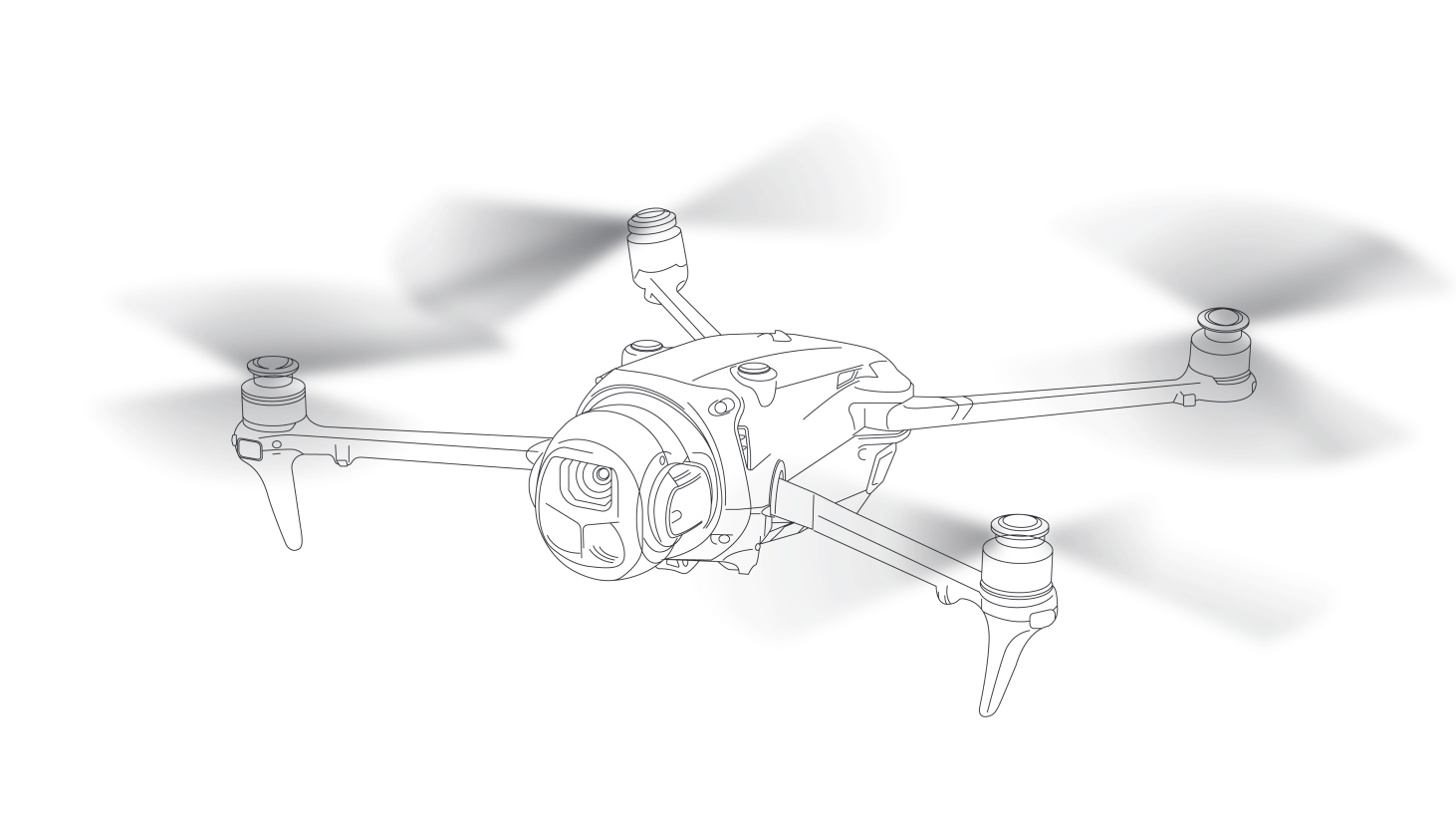
Drone attacks
Case study:
Drones extending the operational reach of Colombian guerrillas
In May 2025, guerrillas dropped a mortar from a drone on a house in Norte de Santander, breaking through the roof and killing a child and injuring 12 other civilians.
During February 2025, guerrillas launched four separate drone attacks on a town in Cauca, targeting a school and a field hospital, and leading the local population to shelter indoors.
In July 2024, an explosive-laden drone detonated on a football field in Cauca, killing a 10-year-old boy and wounding six others.
Seemingly driven by the accessibility and affordability of drone technology, guerrillas in June 2024 began for the first time to regularly use drones to mount attacks.
At first, bombs were attached to drones, which guerrillas then flew into their military and police targets.
Guerrillas now frequently use modified commercial drones with rudimentary release mechanisms to drop explosives on targets, before returning to be reloaded with more explosives.
According to a military source who spoke to El Tiempo, a local outlet, Colombian guerrillas have been trained in adapting commercial drones to mount attacks by Russian former military personnel in Venezuelan territory.
Source: Dragonfly TerrorismTracker
2025*
24 incidents
*Jan-Jun 2025



The use of drones by guerrilla groups has changed the dynamics of the decades-long conflict in Colombia.
In the past, the National Liberation Army (ELN) and dissident factions of the Revolutionary Armed Forces of Colombia (FARC) mainly employed armed ambushes and car bombs to attack Colombian security forces. These guerrillas have often killed civilians as well – either inadvertently or deliberately – as part of their attempts to control rural populations.
While local press outlets reported sporadically on such groups using drones since 2015, they primarily used them to surveil their opponents in the dense woodland and mountainous terrain of conflict zones.
2024
20 incidents



2023
0 incidents

According to Semana, another local news outlet, the authorities ‘neutralised’ 173 drones during a UN Biodiversity Conference in October. Officials did not confirm if any of these were controlled by guerrillas or whether they were laden with explosives. But guerrillas had previously threatened to attack attendees.
Last year, Colombia’s defence minister admitted the military’s ability to counter drones was ‘insufficient’. The government has begun implementing countermeasures, including signal jamming technologies and specialised detection systems.
With minimal risk to the drone pilot, guerrillas can now hit people, vehicles or buildings from a distance without any warning. Guerrillas have quickly taken up the new tactic. According to local press outlets, the Colombian military uncovered an ELN ‘school’ in Choco used to train child soldiers to use drones.
The payload dropped by these modified drones is small.
But the psychological effect on the military, police and local population in rural areas seems to be massive. Based on videos shared on social media, civilians in rural towns now run for cover when they hear the buzzing noise of a drone overhead.
Such videos suggest soldiers have often resorted to firing their assault rifles at drones in an attempt to bring them down.







Image: Getty Images (RAUL ARBOLEDA/AFP)
Image: Getty Images (STR/AFP)
© 2025 Dragonfly Eye Limited
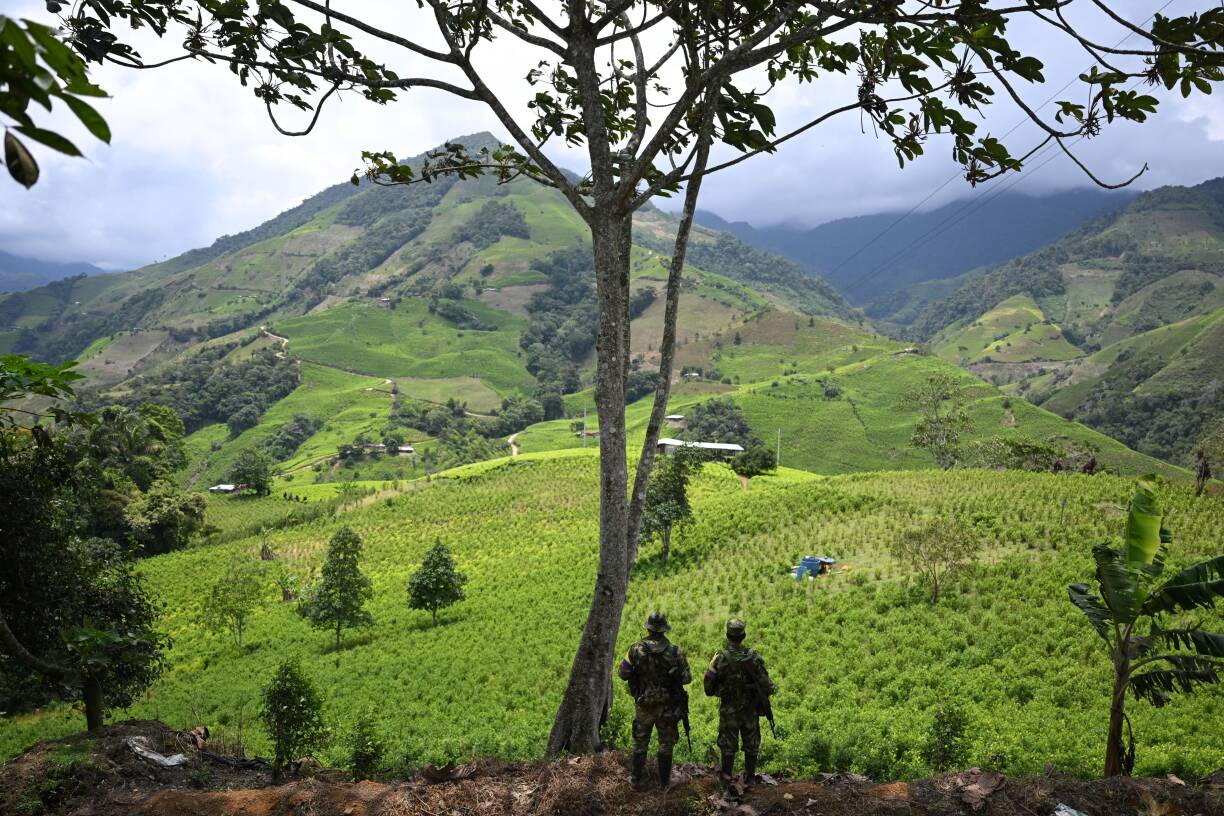
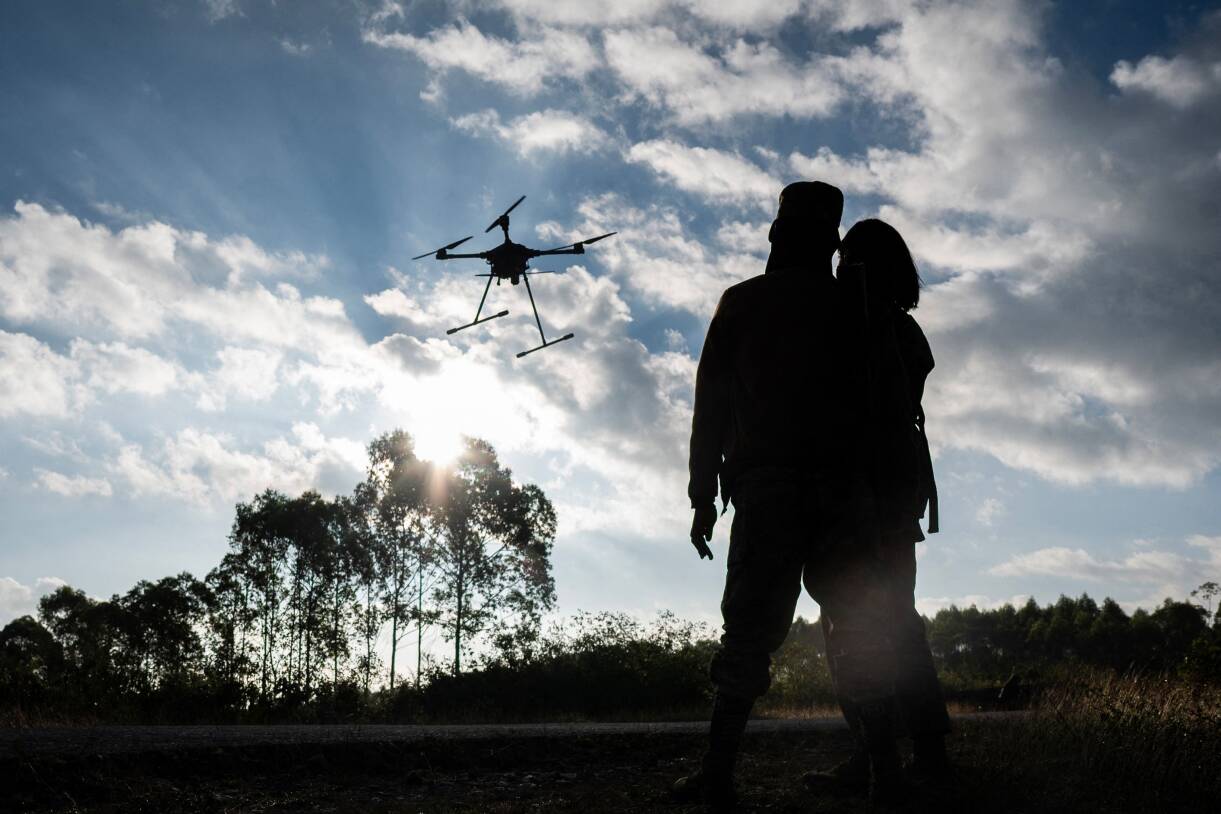
For now, terrorist drone activity appears largely restricted to rural conflict areas. With greater ease, terrorist groups can now more effectively achieve their objectives, destroying military assets, threatening local populations and expanding their territorial gains.
Should the authorities remain incapable of countering such attacks, terrorist groups will probably be emboldened to use drones to mount attacks in urban areas as well.
Militaries fighting terrorist groups globally seem ill-equipped to counter attacks enhanced by the use of drone technology and attacks from drones mounted with explosives. Anti-drone devices present a potential solution, but this technology has not been adopted at a sufficient scale to dissuade terrorists. And terrorist groups have proven resilient and innovative, constantly several steps ahead of the authorities, suggesting they will be quick to think of new methods of mounting attacks.
The rapid development of new drone technologies also affords operators with new and inventive methods for deploying these devices. Weapons manufacturers and militaries globally are seeking to innovate with drone swarms, low-flying stealth drones and fibre optic drones impervious to jamming. Terrorists are undoubtedly watching closely; the battlefield application of new drone tactics has consistently been rapidly replicated by militants.
Artificial intelligence in particular presents a problem. Ukraine has also already sent drones into Russia that were deployed independently of human control, having been trained to find a suitable target before attacking it. UN attempts to reach an agreement to restrict lethal autonomous weapon systems have been ongoing for almost a decade, without a consensus. Terrorist groups will almost certainly find such technology an incredibly attractive prospect.
Terrorist groups determined to mount attacks where they are currently thwarted by robust counter-terrorism structures, such as in the US or Western Europe, are likely watching these developments closely as well. There have, so far, not been any major terrorist attacks in such countries with a drone. But incidents of malicious drone use at airports in recent years have caused severe disruption to operations and have sparked concerns in governments of a security gap. The ease with which commercial drones can be weaponised means there is an ongoing concern for counter-terrorism forces.
Drone tactics are therefore highly likely to become a key feature of terrorist operations in the coming years.
We anticipate continued use of explosive-laden drones in 2025 and the coming years, heightening the already high risk of bombing attacks for security forces and civilians. Indeed, General Luis Emilio Cardozo Santamaria, commander of the Colombian army, stated in April that drones are ‘a threat that is here to stay’.
Terrorist groups in Afghanistan, India, Iraq, Myanmar, Pakistan and Syria have also used drones in similar ways to those in the Sahel and Colombia.
The widespread availability of cheap commercial drones means they
are becoming an increasingly attractive form of attack for groups in conflict zones.
In one month in 2023, Shia militias in Iraq and Syria launched 25 drone attacks targeting US military forces and bases as part of a large coordinated offensive. Iran has shared its technology and information with armed groups it supports in the region for several years.
Global use of drones now seems likely
"The dynamics of the conflict are no longer those long-term battles, as in the past, but the launching of explosives by both sides, between the public force and the armed groups, which have sometimes fallen on the homes of humble people"
Access to drones seems to be extending the operational reach of guerrilla groups across rural areas. They can now conduct cheap, highly accurate attacks against key targets whilst striking fear among security forces and local populations.
As a local mayor told a local radio station earlier this year:

While effective, military jamming devices have many drawbacks. They are expensive and pose the risk of drones – and any payloads they are carrying – falling on civilian sites when deployed in urban areas. And government forces already struggle to govern in many rural areas where they operate, let alone properly implement drone defence measures. Guerrillas are well-funded from their drug trafficking, illegal mining and extortion activities and would be able to quickly replace any downed drones.
The Colombian government is now seeking to introduce new legislation to regulate and restrict the use of drones throughout the country. But this is unlikely to deter or restrict the abilities of guerrillas, who already extensively use smuggling routes across international borders.
